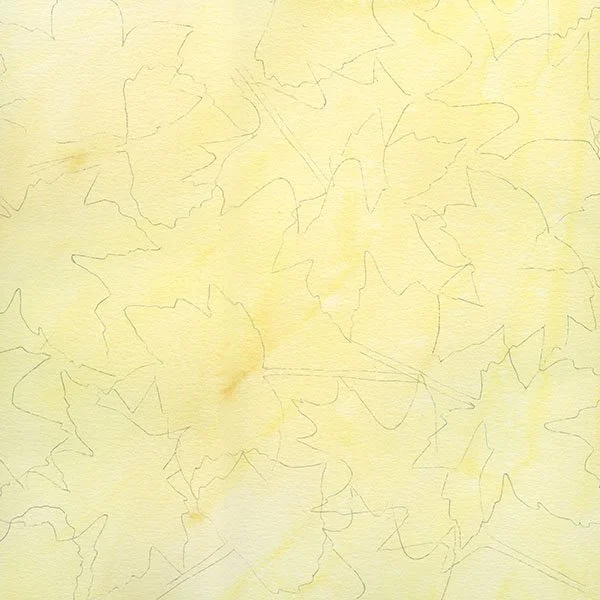An Easy Way to Paint Colorful Autumn Leaves
Learn Something New!
Get out those watercolors that you got for Christmas. You have been meaning to learn how to paint and here’s an exercise that is simple to do. It let’s you explore a few new techniques: overlaying color, blending colors, dropping in color, splatter, and adding detail on top with pens or colored pencils. Whew! You will feel good about the results and happy that you have learned a few things about watercolor too.
I have done this exercise many times over the years.
I start off by drawing leaves onto my watercolor paper, but have noticed that my students struggle with this part of the painting. Leaves are complicated, more than one leaf is extremely complicated, overlapping leaves can be overwhelming. My solution was to come up with cardboard templates of leaf shapes for them to trace. I have provided templates for you in the link below
First Steps
Print out the leaf outlines, Tape down watercolor paper on a backing.
Step Two
Cut out the leaf shapes. It is easier to cut them out and then cut the detail, one section at a time.
Step 3
Trace around the templates on the watercolor paper. Overlap the shapes and make some of the leaves go off the page. Use a mechanical pencil and trace lightly. Then, lightly erase some of the darker lines.
Layer One
Next, put a light yellow wash all over the watercolor sheet. Drop in yellow okra in various places on the wet wash. You will be working from light to dark, simple shapes to detail.
Watercolor Layers Two, Three, Four, and Five
First paint some of the leaves yellow. Next add yellow-orange leaves, then orange, red, and finally brown leaves. Because the leaf shapes overlap, they create different color blend. All along as you are filling in the leaf shapes with color, drop in other colors in to the wet shapes. For instance, if they were painting on an orange leaf, drop in red. Between each color layer allow the painting to dry.
Colorful Autumn Leaves
Play Around
I also suggested you try sprinkling some of the wet areas with salt. When salt is added, it slows the process down because I like salt in watercolor to dry for 24 hours before I do anything else to the painting. The extra salt needs to be brushed off and its best to do that when it is completely dry. Salt in watercolor makes awesome things happen and it's worth the wait.
Salt
The upper left corner has the beautiful salt effect.
Other Effects
The lower right corner effect is from a water spray. The brown leaf has orange dropped into it.
For this project I sprayed water into the wet paint in the leaves with one short spray. It made the paint bleed into the other leaves with some interesting effects.
Almost done
By the time you use the color brown, most of the leaves are finished. If not, you can add purple or any of the other colors that you've already used to finish the shapes off.
The Background
Fill in the background by filling an area with a wash and dropping in color to let it bleed. To make the leave stand out use contrasting colors. I sprinkled salt into the wet background areas.
Finishing Touches
At this point, I like to add splatter. You can splatter with any color. Metallic gold is one of my favorites. I always suggest you practice splattering before you start. You can fling paint with a toothbrush or you can tap it with a wet brush.
Last, and probably my favorite part, is to add a pencil on top. For autumn leaves, I use colored pencils to draw the veins. You can paint them if you want. I've even added outlines and veins with gold metallic pens, with wonderful results.
Patience is important
Besides, all of the techniques used to do this lesson, you will also need patience. Each layer needs to dry before you moved on to the next. I liked this part a lot because it teaches you to not do everything with watercolors all at once. Painting a painting all at once is the best way to end up with muddy color. When painting watercolor patience equals brilliant colors.
There are no hard-fast rules, but these steps lead you through a process that results in creating beautiful autumn leaves in watercolors.
If you want to do a less complicated versions of this exercise you can use the same instructions and paint a solitary leaf.
If hope you enjoyed this tutorial and plan to try it out. Feel free to share it with someone you know who is interested in learning how to paint with watercolor.




























